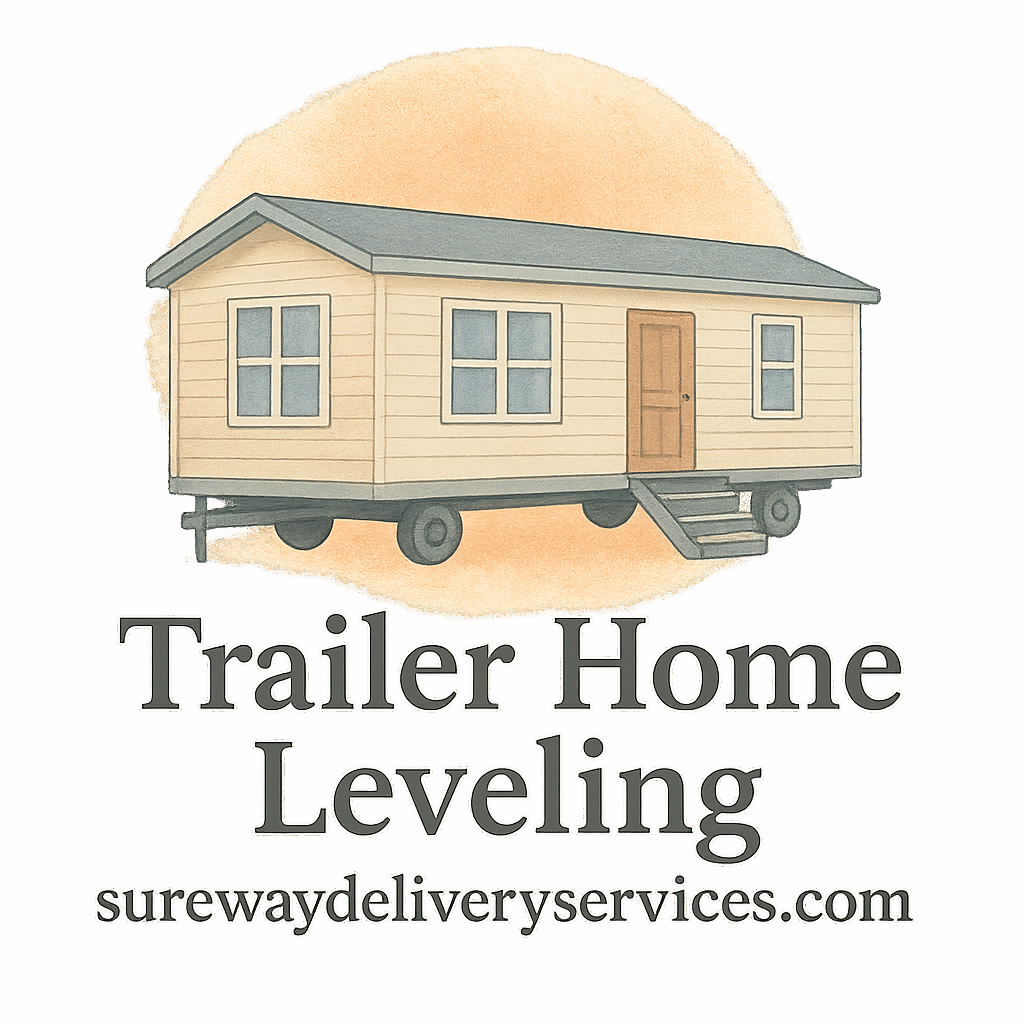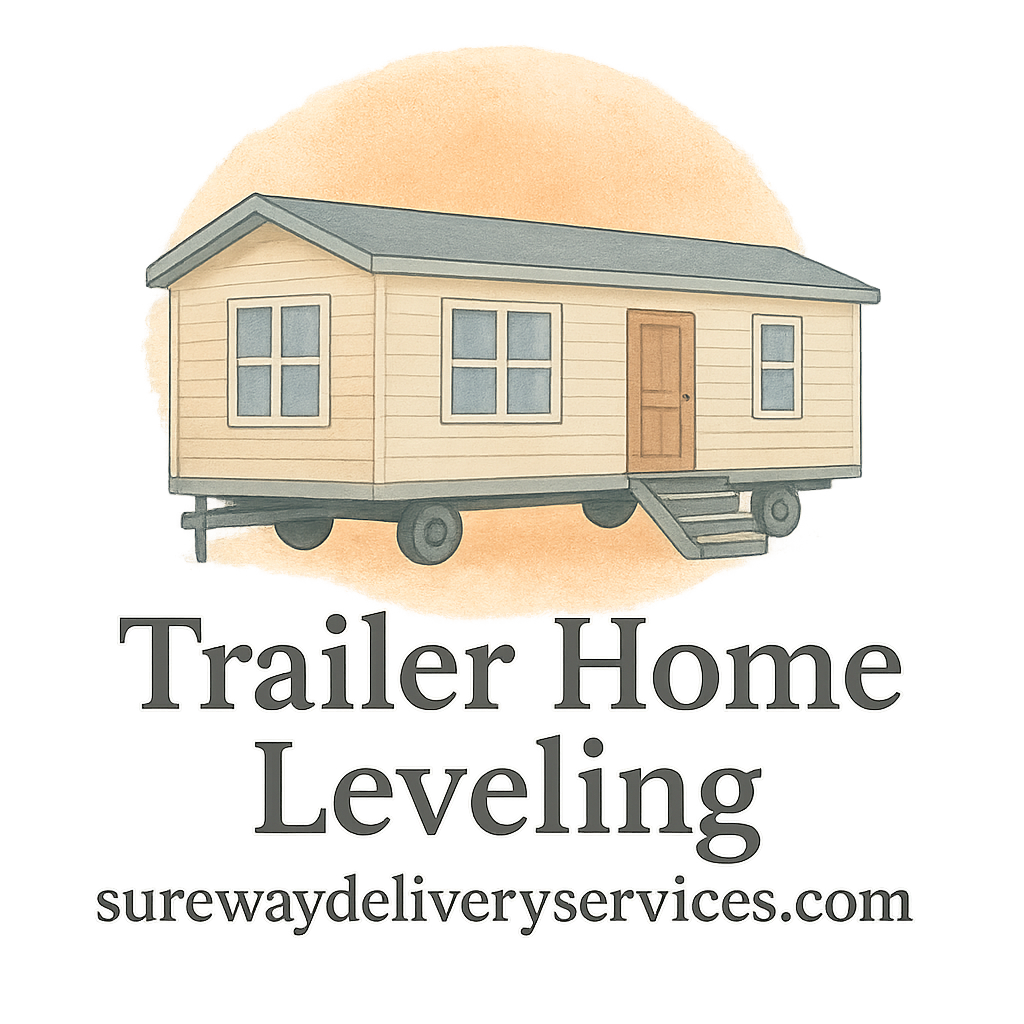Trailer homes are practical, mobile, and cozy, but let’s face it—keeping them level is no small feat. A slight tilt today could lead to major headaches tomorrow. That’s why seasoned pros don’t just eyeball it—they follow a thorough checklist before they evaluate a trailer for home leveling.
In this article, we’ll dive deep into the eight core methods professionals use to ensure your trailer stays solid, safe, and serene. We’ll break down each method, keep things simple, and sprinkle in expert tips along the way.
Introduction
Leveling a trailer home isn’t about guesswork. It’s a calculated process based on physical inspections, measurements, and even the homeowner’s experience. If you’ve ever felt your trailer slant or heard strange creaks, it’s probably time to get it evaluated.
But how do professionals evaluate a trailer for home leveling? Let’s explore their toolkit and process.
1. Inspecting the Foundation Structure
Why the Foundation Matters
First things first—if the foundation isn’t sturdy, nothing else matters. Pros start by crawling under the trailer and examining the pier blocks, pads, and anchors. Any signs of cracking or shifting are red flags.
A weak or shifting foundation is like building a house of cards. Every problem on the surface usually starts underneath.
Tools Pros Use to Evaluate Stability
Experts often use levels, shims, and even moisture sensors. They check whether the blocks are placed evenly and if the soil has shifted or settled.
For more in-depth information, visit our Basics & Introduction page.
2. Checking for Visible Trailer Issues
Cracks, Gaps, and Sagging Signs
Once the foundation is reviewed, the pros walk through the trailer looking for telltale signs. Cracks in the walls, sagging door frames, or windows that stick are all signals that something’s off-balance.
These signs often scream “realignment needed.”
Using the Trailer Issues Tag
Want to learn more about spotting trouble? Our Trailer Issues tag breaks down everything from minor issues to major repair jobs.
3. Measuring Floor Leveling Accurately
Laser Levels and Water Levels
You can’t just place a ball on the floor and hope for the best. Professionals use high-precision tools like laser levels and water levels to check elevation differences across rooms. They’ll often measure every few feet to get a complete picture.
How Unlevel Floors Affect Your Home
An unlevel floor can warp furniture, weaken wall joints, and even cause plumbing mishaps. It’s not just about comfort—it’s about safety.
This topic connects closely to Techniques & Methods professionals use for precise trailer leveling.

4. Assessing Jack Points and Support Beams
Common Jack Problems
Jacks are the backbone of your trailer’s stability. Rusty jacks, uneven wear, or poorly installed beams can cause uneven weight distribution and serious safety hazards.
Link to Trailer Jacks Tag
For a complete guide on jack maintenance, check out our detailed Trailer Jacks page.
5. Reviewing Water Drainage and Soil Conditions
Moisture and Erosion Indicators
Even a perfectly set trailer can shift if the surrounding soil erodes or water pools underneath. Pros assess the slope of the land, look for signs of soil movement, and ensure your drainage setup is sound.
Connection to Long-Term Trailer Maintenance
Good drainage is part of routine trailer maintenance. If ignored, erosion can undo all your leveling work.
6. Using a Comprehensive Maintenance Checklist
What’s Included in Pro Checklists
A professional’s checklist covers everything: foundation integrity, leveling measurements, interior damage, exterior inspection, and even past repair logs.
Link to Checklist Tag
Download a ready-made checklist from our Checklist tag to DIY or track professional evaluations.
7. Interviewing the Homeowner About History
Important Questions to Ask
Believe it or not, what the homeowner says can be just as telling as what the tools reveal. Has the home shifted recently? Was there a recent storm? Have doors started sticking?
Tying to Customer Reviews and Signs**
These conversations often align with past customer reviews and signs of shifting. Real-world feedback adds context to the evaluation.
8. Estimating Cost and Creating a Service Plan
Price Transparency
Once all the evaluations are done, pros will offer a quote and timeline. It’s important to make sure you’re not being overcharged—know the difference between fair pricing and fluff.
Internal Links: Cost & Budgeting, Service Package
Get price-savvy with our cost budgeting guide or explore what’s usually included in a typical service package.
Final Thoughts
Evaluating a trailer for home leveling is not just a one-off task—it’s part of responsible home ownership. From the foundation up, pros look at every angle, every creak, and every crack to make sure your trailer is sitting safe and sound.
If you’re feeling unsure about your trailer’s condition, don’t wait until a small tilt becomes a big problem. Browse our guides, call a trusted pro, and take control of your mobile home’s future.
For more resources and updates, head to TrailerHomeLeveling.com and explore tags like:
Frequently Asked Questions
1. How often should I evaluate a trailer for home leveling?
At least once a year or after any extreme weather event. See our annual checklist for guidance.
2. What are the warning signs of an unlevel trailer home?
Cracks in walls, slanted floors, stuck doors, and squeaky frames are all signs. Visit our Signs Tag for more.
3. Can I level my trailer without professional help?
Yes, but it’s risky. If you’re unsure, it’s better to hire a pro—explained in detail at Service Hiring.
4. How much does it typically cost to level a trailer home?
Anywhere between $500–$2000 depending on severity. See full breakdown in our Cost & Budgeting post.
5. What tools are essential for trailer leveling?
Jacks, water levels, shims, and stabilizer pads. Full list available under Trailer Tips.
6. Do I need to relevel after every move?
Absolutely. Anytime a trailer is relocated, it must be rechecked. That’s standard in our Trailer Service process.
7. Can a sloped lot affect trailer leveling?
Yes, sloped land causes uneven settling. Moisture drainage becomes crucial—explained under Maintenance & Inspection.


